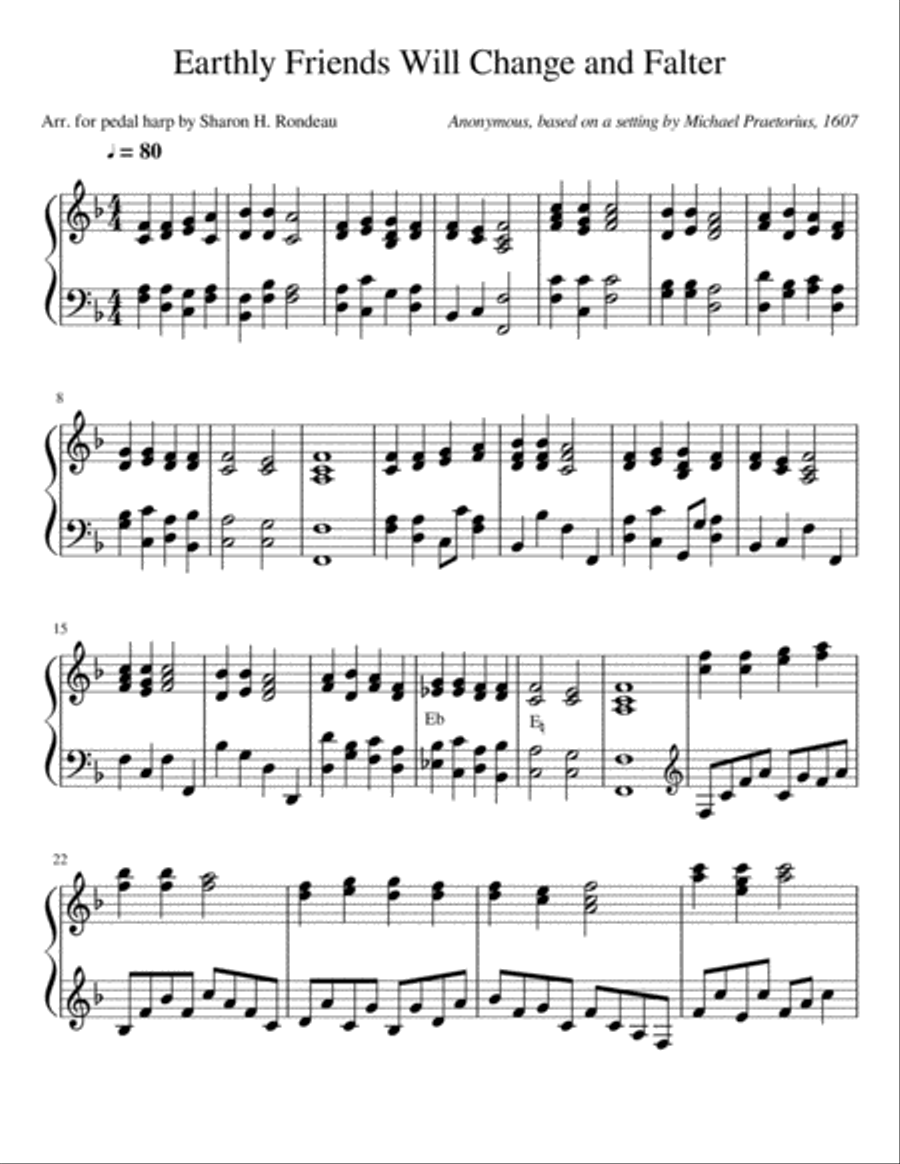Harp - Level 3 - Digital Download SKU: A0.827963 Composed by 1607, Anonymous, and based on a setting by Michael Praetorius. Arranged by Sharon Hanjian Rondeau. Christian,Christmas,Renaissance,Sacred,World. Score. 2 pages. Sharon Hanjian Rondeau #4797301. Published by Sharon Hanjian Rondeau (A0.827963). A Christmas choral work from the Middle Ages comes alive on the pedal harp. New to the harp repertoire, the song and words can also be found in my book, Something Old, Something New for Christmas here: https://www.sheetmusicplus.com/title/something-old-something-new-for-christmas-digital-sheet-music/2...
